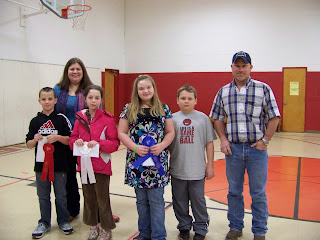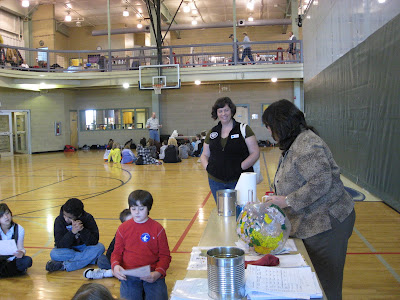


Hello everyone, I am happy to mention that winter seems to be over and the River des Peres Watershed Coalition (RdP) is springing into action. When it comes to watershed protection and restoration, various modes of action one can take; from building your own rain barrel to litter pickup, and habitat restoration. During the month of March the RdP was ale to engage in all the modes of action to help improve the water quality and aesthetic appeal of the River des Peres. On March 14 the RdP, held its first litter pickup of the season at Mona Terrace in University City. We had about 12 people join us on a soggy Sunday afternoon, to help with the removal of wild roses, honeysuckle, and residential litter, like rugs, lamps, tires, bottles, light bulbs. We cleared out most of the honeysuckle, winter creeper, and other invasive species, and are now switching to a method of invasive species control, due to the fact that the stream bank is quite eroded and the invasive species is fortunately (or unfortunately) is keeping the stream bank from falling into the river. Unfortunately most of our time at Mona Terrace is dedicated to litter pick up, with the River des Peres being channelized upstream and downstream of our site trash and debris ends up on this stretch of the river. We had a range of ages helping out from children, college students, and beyond. Most of our planting at Mona Terrace will begin in late March, and early April.
On March 21 members of the RdP held a dry run rain barrel-building workshop with seven staff members of EarthWays Center. EarthWays Center is a division of the Missouri Botanical Garden. Their building located in Midtown St. Louis, is powered by a variety of sustainable methods (solar, geothermal, and wind), their building features a green roof, and is furnished with eco friendly products. The River des Peres Watershed Coalition felt privileged to work with the group because they are completely committed to promoting sustainability through education and the improvement of the built environment. We could help them implement a sustainable practice at their own homes, by them learning the steps of the rain barrel process, building their own barrel and taking it home with them when completed. Eric Karch, Lorin Crandall, and I enjoyed working with the staff, good to get an idea of people’s comfort levels with power tools. It was an informal workshop, in which we explained the RdP’s purposes for building the rain barrels, particularly reducing the number of Combined Sewer Overflows (CSO’s), about 56 annually on the River des Peres and its tributaries. Another purpose is to use stored rainwater for gardening purposes, which can be beneficial to plants as the water is untreated, and during summer droughts rain barrel water isn’t subject to any watering restrictions. We broke the group into 3 teams, based on the steps of the building process, so we had an inflow team (the atrium grates), outflow team (drilling of the overflow hoses, male adapters, hose clamps) and spigot team (bulkhead, spigot threading).
The dry run was crucial for the RdP in deciding was steps of the building process would be best left for us and for the participants. We assessed the safety and risks of using power tools, knives, and moving barrels in a larger group setting. With the 3 of us being fairly familiar with the rain barrel building process, the tips and tricks we learned for drilling holes in certain spots and threading the spigot with Teflon tape for examples, takes time and repetition to get a grasp on. So we realized that we should notate/explain the minor specifics of our rain barrel building process like flipping the rubber on the bulkheads, and pre thread the electric conduit circuits on our male adapters (apart of the outflow portion of barrel building) as a guide. We learned from the workshop that we should mark the drilling spots (based on layout chosen) on the rain barrels before the workshop; give each participant their own bag of tools and supplies. Because a main way of getting our rain barrel to the public and into the built environment is by spreading the word, the reasons why the rain barrels are a good thing, teaching others how to build them, and using the word of mouth to get more people interested in getting their own rain barrel.


















